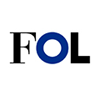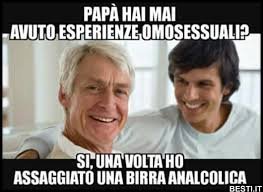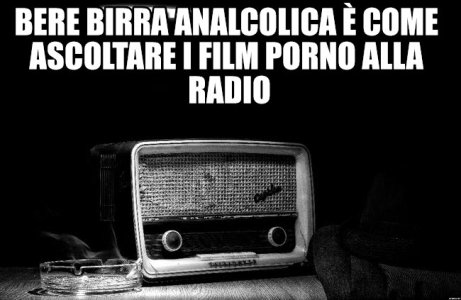Leite
Utente Registrato
- Registrato
- 16/9/06
- Messaggi
- 3.176
- Punti reazioni
- 203
il documento della Trian di Peltz (che vuole un posto nel cda) su PG:
Document [Rocket]
Document [Rocket]
Follow along with the video below to see how to install our site as a web app on your home screen.
Nota: This feature may not be available in some browsers.


Societe Generale porta sul segmento Bond-X (EuroTLX) di Borsa Italiana due obbligazioni, una in EUR e una in USD, a tasso fisso decrescente con durata massima di 15 anni e possibilità di rimborso anticipato annuale a discrezione dell’Emittente.
Per continuare a leggere visita questo LINKvorrei fare una domanda, e magari offrire uno spunto di riflessione. la strategia del blackdog è conclamatamente indirizzata al dividendo (tranne se non sbaglio la holding di BRKB).
in questa ottica, che valore assume l'acquisto di qualche titolo che si prevede darà dividendo in un futuro di medio periodo? e per voi che sicuramente ne bazzicate da molto più tempo di me (ho 27 anni); quando un'azienda diventa matura, dà pressochè sempre dividendo?
vi faccio un esempio: sono abbastanza profondo conoscitore delle aziende FB e GOOG usandole per lavoro.. c'è poco da spiegare, sono business ad alto margine per via della loro posizione quasi duopolistica. ora, in questo momento storico mi aspetto che abbiano bisogno di soldi da investire, ma è anche vero che le loro disponibilità liquide stanno raggiungendo livelli imbarazzanti, tali che ne necessitano in quantità assai piccola in confronto. in questo caso ho due domande:
a) è lecito aspettarsi che prima o poi vadano a pagare dividendo?
b) ha senso indirizzarsi su queste aziende, comprarle anche pre-dividendo aspettandosi poi una cedola in futuro?
c) che ne pensate di questa strategia?
(premetto che le ho prese perchè, conoscendole e ipotizzando il loro successo continuativo nei secoli dei secoli (cit.) in ogni caso ne andrei a guadagnare, ma il discorso del dividendo è comuqnue affascinante)
In origine ... Apple e Microsoft non staccavano dividendi ..ma poi la liqudità è diventata enorme ed ingestibile... e ora lo fanno ..e staccano pure ottime cedole rispetto alla quotazione di qualche anno fa. Quindi credo proprio che sia possibile.
La stessa Berkshire Hataway non lo ha escluso in caso dovesse continuare ad accumulare liquidità.
Spice Maker McCormick Adds French’s Mustard to Its Shelf in $4 Billion Deal - WSJ
Turns out, there is some appetite for all that packaged food for sale. McCormick & Co. said it agreed to acquire Reckitt Benckiser Group PLC’s food division, whose brands include French’s mustard, for $4.2 billion, the latest in a wave of deal activity in the global packaged-foods sector. The transaction comes three months after the U.K. company put its food unit up for sale. Analysts at the time estimated that it could be worth $2.5 billion to $4 billion. The agreement also comes amid a flurry of M&A activity in an industry looking to cut costs to insulate itself from slowing sales. Many companies are trying to change product mixes as consumers move to healthier or locally produced options. Low inflation has made it difficult to raise prices to make up for sluggish volume growth in many markets.
That has triggered a number of strategic reviews among big food firms. Unilever PLC, the Anglo-Dutch consumer-goods behemoth that earlier this year rejected Kraft Heinz Co.’s $143 billion takeover bid, has said it is planning to unload its margarine-and-spreads business. Switzerland’s Nestlé SA last month put its U.S. confectionery business up for sale. All of those assets on the market—at a time when the global packaged-food industry is facing headwinds on several fronts—raised questions about whether sellers might be able to unload their businesses at attractive prices. But recent deals—including Wednesday’s agreement—suggest there are still plenty of strategic buyers willing to pay top dollar for good assets.In April, cereal giant Post Holdings Inc. agreed to buy Weetabix Food Co., maker of the breakfast brand, for £1.4 billion ($1.83 billion). Post faced several other bidders for the brand, which China’s Bright Food Group Co. and Baring Private Equity Asia had put on the block. Bright bought its 60% stake in Weetabix in 2012 for £1.2 billion but never succeeded in turning it into a hit in Asia. Still, the price Bright ultimately got from Post translated into a higher multiple over adjusted earnings than some had expected. Reckitt’s food business, called RB Foods, was seen as one of the most attractive on the block in recent months. French’s is America’s best-selling yellow mustard. RB Foods other brands include Frank’s RedHot sauce and Cattlemen’s barbecue sauce. Reckitt said it wasn’t core, as it puts more emphasis on its home and personal-care offerings. In February, Reckitt agreed to acquire baby-food maker Mead Johnson Nutrition Co. for $16.6 billion. RB Foods generated just £411 million ($536 million) of Reckitt’s overall revenue of £9.89 billion in 2016. But its operating margins—considered close to 27% last year—are considered high for packaged food. Sparks, Md.-based McCormick, whose current brands include Lawry’s and Grill Mates, said it expects combined 2017 annual net sales of about $5 billion. It also projects the deal will generate cost savings of around $50 million, the majority of which will be achieved by 2020. Though McCormick’s leverage ratio will increase because of the deal, the company plans to maintain its dividend policy but curtail its share-buyback program in an effort to maintain its investment-grade credit rating, it said. Reckitt said it intends to use the proceeds from the deal to reduce its debt.
Ciao leite credo che sarebbe molto più di aiuto un piccolo sunto in italiano che il copia/incolla dell articolo, perché tanto c'è il link



poi uno dice la birra analcolica:
European Beer (and Near Beer) Sales Lift Heineken - WSJ
Heineken NV has lifted sales in Europe—but the extra beer isn’t all going to drinkers’ heads. The Dutch brewer posted higher profit for the first half of 2017, fueled by strong sales in Europe—including double-digit revenue growth for no- and low-alcohol drinks there. The lift represents an early vote of confidence after an investment push into the sector by Heineken and its competitors.
Heineken joins the world’s largest brewer, Anheuser-Busch InBev, in reporting better-than-expected results, thanks in part to a rebounding European beer market. Last week, AB InBev said sales grew by double digits across Western Europe—a market that has lagged in recent years amid a stop-and-start recovery after the global financial crisis.
“It was a really good performance of Europe, with the growth coming from a number of countries,” Chief Financial Officer Laurence Debroux said. “It was pretty balanced.” The world’s second-largest brewer by sales said profit growth was strongest in Europe, as beer volumes rose in France, Italy, Spain and Portugal, helped by warmer weather.
Global beer sales have been hit in recent years by a shift among drinkers toward wine and spirits. Consumers in the developed world have also pivoted to healthier drinking options, putting added strain on the market. That has led the world’s biggest brewers to invest heavily in a product that has been hit-or-miss for decades: non-alcoholic or lower-alcohol beer. In May, Heineken launched an alcohol-free version of its flagship lager and results “already look promising”, including in the U.K. and France, the company said. Brewers earn fatter profit margins from nonalcoholic beer because of the absence of excise tax and the fact that these beers often sell at a premium. But various products have proved tough sells, in large part due to consumer complaints about taste. Despite the upturn in Europe, Heineken said low- and no-alcohol sales around the world fell slightly, to 6.1 million hectoliters from 6.2 million last year. It blamed weakness in malt products in Nigeria and Egypt.
However, overall beer volumes, revenue and profits grew on a like-for-like basis in all four of its regions, with turnarounds in Africa and the Americas after a slow start to the year. Net profit rose 49% to €871 million ($1.02 billion) on the comparable period in 2016 when the company booked an impairment charge on its business in the Democratic Republic of Congo. Revenue rose 5.7 % on an organic basis to €10.48 billion. Consolidated beer volumes rose 2.6% organically in the period, beating analyst expectations of a 1.7% rise.
Vedi l'allegato 2418266